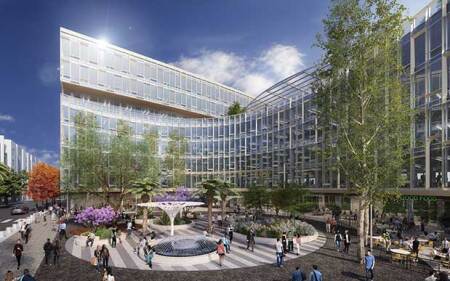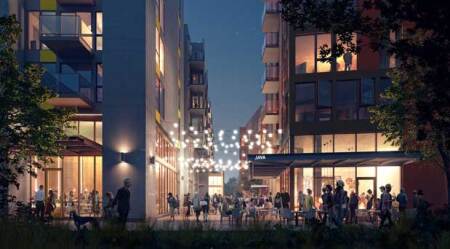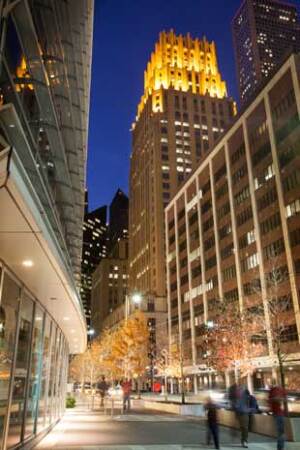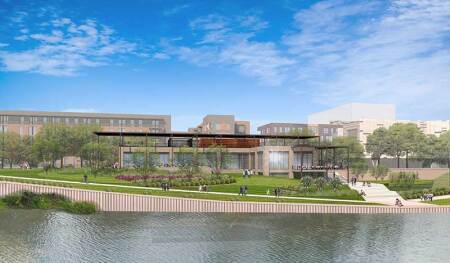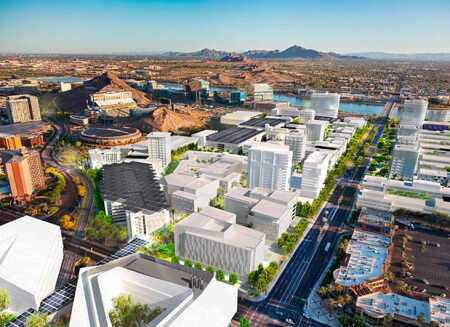With a youthful and highly educated workforce, an expanding technology sector, and strong population growth, the U.S. West remains one of the country’s economic powerhouses.
“The West has been one of the regions in the country that has outperformed the others in this economic cycle thanks to a combination of higher education levels, diversified industry composition, and strong in-migration,” says Michael Cohen, vice president, advisory services, with Washington, D.C.–based CoStar Group, a commercial real estate information provider. “The region continues to be at the top of markets that perform well cycle after cycle and realizes real estate investor dollars.”
The younger demographics in the West, including California, Washington, Oregon, Arizona, New Mexico, Texas, Colorado, Idaho, Montana, and Wyoming, point to more economic benefits in the future. “In places like the Northeast and Midwest, there is a very large group—the baby boomers—nearing retirement, and that’s going to have a big economic impact,” says Cohen. “You’re going to see a much more pronounced slowdown in working-age population. It’s not so much the case in West, where there is a large pool of young, well-educated talent.”
While the West is thriving, clouds are forming in some areas, including California, where the high cost of doing business is driving some firms to consider expanding elsewhere and housing remains out of reach for many.
Coastal markets are usually the most active and overheated in some property sectors, says Kelvin Tetz, San Francisco–based partner and national practice leader for real estate for Seattle-based Moss Adams, an accounting, consulting, and wealth management firm. “For some, the boom can also be a problem,” he says. “Virtually every real estate developer and firms in related fields are being hit with significant increases in development costs and a dearth of qualified labor for current and future projects.”

Codevelopers Blake|Griggs Properties and Transit Village Associates have begun construction of the 16-acre (6.5 ha) Walnut Creek BART Transit Village east of San Francisco. Work on the initial parking garage will be followed by 596 multifamily units with over 26,000 square feet (2,400 sq m) of ground-floor retail space, opening in phases through 2023. (Blake|Griggs Properties)
California
Few states hold as much promise—or face as many potential challenges—as the nation’s most-populous state. “California has one of the largest economies in the world, and its innovation, outreach, and sheer size continue to work to its advantage,” Cohen says. “However, the high cost of doing business may contribute to more out-migration.”
The state’s major metropolitan areas—San Francisco, Los Angeles, Orange County, and San Diego—are benefiting from strong economic growth. “Near-secondary markets also have been booming, but so has the increase in density of existing downtowns and mixed-use urban nodes,” Tetz says. “One winner is transit: there’s more support than ever for transit options, and L.A. and San Diego have been expanding train service.”
In Los Angeles, development and construction firm Skanska USA, based in New York City, was awarded a design/build contract to extend the Los Angeles County Metropolitan Transportation Authority’s Purple Line 2.6 miles (4 km) west from the Wilshire/La Cienega station, which is under construction.
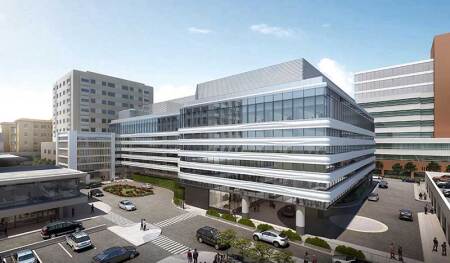
Skanska USA is building a five-story, 175,000-square-foot (16,300 sq m) Acute Care Hospital Building at Hollywood Presbyterian Medical Center in Los Angeles. The $188 million development is expected to be completed in December 2020 and will replace the existing emergency department and include a medical/surgical patient unit, a labor and delivery department, a clinical lab, and other units. (kmd architects)
“Linking the Purple Line to West Los Angeles will increase regional mobility and improve connectivity throughout the Metro system,” says Clare De Briere, executive vice president of Skanska USA Commercial Development and chair of ULI Los Angeles. “One of the things I think is most remarkable is that the city and county residents voted to tax themselves for the additional improvements. Everything is on schedule to have it completed by the 2028 Olympics.”
The city’s economy continues to be robust. “Los Angeles is unique to a lot of cities because it has an incredibly diverse base of industries, including entertainment, media, aerospace, and manufacturing,” De Briere says. “The tech side is growing significantly and doesn’t appear to be slowing down any time soon. We have a great manufacturing core and a strong aerospace sector. L.A. also has a highly educated workforce and a high percentage of millennials who are driving employment.”
Orange County’s economy remains diverse, too. “The county’s sectors include tourism, health care, gaming, construction, and advanced manufacturing jobs, among others,” says Michelle Weedon, senior vice president, advisory, for Meyers Research in Costa Mesa. “Furthermore, the jobs are spread throughout the county, providing micro–employment hubs instead of one commuter destination. We also have very low unemployment.”
Continued growth is forecast for Orange County in 2019, although new-home price and sales growth will depend on builders and developers delivering the right products at the right price. “Buyers will be more discerning as they face housing affordability challenges,” Weedon says. “Well-executed product will still see housing demand into 2019. It’s likely that sales volume will be flat compared to 2018, but leveling off still provides healthy sales.”
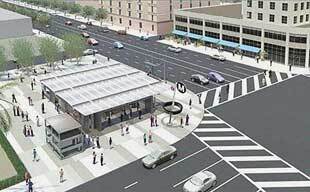
A future transit station for Los Angeles Metro is scheduled to be constructed at Wilshire Boulevard and La Brea. The first phase of the $1.64 billion Westside Subway project will extend the L.A. Metro Purple Line by 3.9 miles (6.3 km) beginning at the Wilshire/Western station. The project is scheduled for completion in 2023. (Skanska-Traylor Brothers-JF Shea)
Several Orange County master-planned communities (MPCs) are driving the sector, with the Irvine Company’s Villages in Irvine commanding the largest market share, followed by Five Points’ Great Park in Irvine. Major MPCs farther south include Baker Ranch in Lake Forest and Rancho Mission Viejo in the southern part of the county, Weedon adds.
Rising costs, robust tenant demand, and extremely limited supply continue to affect San Francisco’s real estate sector, according to David Cropper, development director at San Francisco–based TMG Partners, a privately held development company focusing on urban infill projects in the Bay Area.
“There has been continued acceleration of tenant demand, leading to a grab for the few remaining available blocks of space in San Francisco,” he says. “Now, we have a situation where 29 large tenants are seeking some 4.5 million square feet [418,000 sq m] of space, [but] only about 680,000 square feet [63,000 sq m] is available and can be delivered in the near term.”
Office rents are rising as tenants scramble to lock down available space, with some companies looking to San Jose and Oakland instead. “In San Francisco, it is incredibly difficult to get entitlements to build new space since there is an annual cap on office development,” Cropper notes. “Tenants are scrambling to lock down the next availabilities, even if they don’t need the space right now. Some are going to places like Oakland, which is a BART [Bay Area Rapid Transit] stop away, and which has historically traded at a discount to San Francisco. Companies need to grow, and some may have to do so outside of their normal comfort zone.”
The shortage of affordable housing is having a greater effect on communities. The city and state continue to experience housing shortages, skyrocketing rents, and widespread homelessness; California voters defeated an initiative last November to expand rent control.
As is the case for most California cities, the number-one challenge for the Orange County housing market in 2019 is affordability, says Weedon. “Builders are working with consultants and experts to figure out the best land use, density, and product solutions to try to push new building back toward attainable thresholds,” she says. There are some price drops on existing product, Weedon notes. “Incentives were up more than expected in 2018 fourth quarter.”
Traffic also is a major concern. “Commutes all over the Bay Area are unreasonable—another sign of a full-employment economy,” says Cropper. “If the unemployment rate nationally is under 4 percent, it’s tighter in San Francisco. Many construction projects are over budget and late delivering; contractors are scrambling to finish new products, and construction costs have risen 10 to 14 percent per annum over the last six years.”
In addition to affordability and mobility, another worry is uncertainty. “Our political environment is unpredictable, and developers like predictability,” De Briere says. “When it’s unpredictable, it makes everything so much more variable.”

Mithun provided architecture, interior design, and landscape architecture for the University of Washington’s mixed-use Lander Hall, Maple Hall, and Terry Hall in Seattle. Located near a new light-rail station, the halls are in an emerging student-housing district featuring linked amenities and public plazas. (Kevin Scott)
Washington
California’s challenges are benefiting nearby states. The migration of individuals—and companies—from Silicon Valley to Seattle and elsewhere in the Pacific Northwest continues. “For a number of years, young and tech-oriented talent have come here from California because of the quality of life, availability of jobs, and lower cost of living,” says William Pollard, founding principal at Seattle-based Talon Private Capital, a commercial real estate private-equity investment firm. “People from San Francisco and Silicon Valley leave because of traffic and taxes. It’s fueled a large pool of applicants who have swelled our employment base.”
Seattle—a market becoming dominated by three or four tech companies, with Microsoft and Amazon being the largest—has become a second Silicon Valley, he adds. “To help retain talent, companies such as Google and Facebook have increased their activities in Seattle to offer employees an opportunity to move here,” Pollard says. “Google and others have leased massive amounts of space compared to their presence three years ago. Homegrown companies have exploded, with Amazon the obvious one. Amazon occupies almost 25 percent of the total Seattle downtown market area: the company owns and leases approximately 14 million square feet [1.3 million sq m] of the 60 million-square-foot [5.6 million sq m] market size.”

Above and below: Construction of the 279-unit Arras mid-rise housing and retail development is under way in Seattle’s Spring District. The former Safeway distribution center is being transformed into a 36-acre (15 ha) light rail–linked mixed-use neighborhood where employees can live close to work. (www.mir.no)
Traditional tech is not the only area getting an enormous influx of capital investment, Pollard says; the region’s medical research investment is far greater than ever anticipated. “We have one of the nation’s largest children’s hospitals and cancer research center,” he notes. “All this medical research is surrounded by traditional tech and brings a lot of smart people to Seattle.”
Population growth and company expansion in Seattle are not expected to slow, adds Bert Gregory, partner in global design firm Mithun, based in Seattle, “which translates into strong office and multifamily housing demand. Costs have increased and significant multifamily units are coming on line. There is some tension on project financing, but construction is moving forward on well-conceived and well-located projects. More large-scale master-planned and mixed-use developments are going forward into the entitlement phase, targeting long-term absorption because of their multiphase implementation. Transit-oriented development [TOD] is a cornerstone of these projects. Smart cities that are able to expand transit infrastructure are seeing the market respond to that foresight.”
One example: the extension of Seattle’s light-rail service into nearby Bellevue’s Spring District, where a former Safeway distribution center is being converted into a 36-acre (15 ha) mixed-use community that includes Security Properties’ 279-unit Arras mid-rise housing and retail development, which is designed by Mithun. “The Spring District will eventually accommodate up to 2,000 residents and 13,000 office workers in a pedestrian-scale design that puts people first and promotes social interaction and healthy living,” Gregory says. “Centered on a dynamic, landscaped courtyard, Arras’s three buildings act as amenity-rich ‘spokes’ for residents. A variety of unit types and sizes support resident diversity.”
Seattle must keep up with its growth from an infrastructure perspective, Pollard emphasizes, adding that the cost of housing can be challenging. “Our secret sauce is becoming less secret over time, and we risk our living costs getting closer to being on par with San Francisco,” he says.

Heartline, a mixed-use community in Portland’s trendy Pearl District, incorporates a five-story, timber-and-steel, 58,400-square-foot (5,400 sq m) office building over retail space and a 15-story, 218-unit residential high-rise connected by a public courtyard. It was completed in 2018. (Kevin Scott)
Oregon
Portland’s population growth is still among the most robust in the United States, reports Kevin Cody, commercial real estate consultant at CoStar. “At 2.4 percent, Portland’s annual job growth substantially exceeds the national average of 1.7 percent,” he says. “Many new residents come from more expensive metros in search of a lower cost of living. Of the top 10 metros for net domestic migration over the past few years, half are California metros. The lack of a sales tax in Oregon also is appealing.”
Portland continues to attract industry, including high tech. “There is certainly a good industry mix in Portland, but it is a little less diversified market than Seattle,” says CoStar’s Cohen. “It continues to perform well and sees some good interest from the outside commercial real estate community.”
Portland’s Pearl District, historically a warehouse area but now a center for mixed-use development, is experiencing tremendous activity. Security Properties’ two-building Heartline project designed by Mithun opened in fall 2018 in the Pearl District and is cited as an example of how Portland respects its past and its cultural uniqueness. “Heartline is two complementary buildings joined by a new public courtyard,” Gregory says. “The timber-frame low-rise is a modern interpretation of historical industrial buildings to the south, while the sleek, glassy residential tower relates to a taller context to the north.”
Texas
One of the biggest real estate projects announced in Texas last year was Apple’s decision to build a $1 billion campus in Austin that will add 5,000 workers initially and as many as 15,000 jobs over time. Apple was attracted by the Texas state capital’s relatively low cost of living and its strong educational component with several local universities, including the main campus of the University of Texas. Other companies also have recognized Austin’s attributes—Texas has no state income tax, and housing is a lot more affordable than in many other states—including Google, Facebook, and the U.S. Army’s Futures Command.
Austin has been one of the healthiest markets in the country during this cycle, Cohen says, with favorable population and job growth resulting in strong demand, pushing vacancies below 9 percent. “However, construction has been active, suppressing rent growth in recent years,” he adds. “Apple’s $1 billion investment to build a new campus will make it Austin’s largest employer.” Austin likely was selected for its educated workforce, affordability relative to other major tech markets like Boston and Silicon Valley, and high level of tech employment, he says. The city’s tech industries accounted for nearly 140,000 jobs, or 14 percent of total employment—about twice the national average, he notes.
Dallas/Fort Worth’s affordability, location, and quality of labor continue to interest major employers. In 2017, Toyota relocated from California to a 2 million-square-foot (186,000 sq m) headquarters in Plano, 30 miles (48 km) north of Dallas, adding about 4,000 jobs. Liberty Mutual Insurance and Charles Schwab also moved to the metro area, and existing employers including State Farm, AT&T, 7-Eleven, JPMorgan Chase, USAA, and Fannie Mae are expanding their local footprints.
“Net migration continues to rank among the highest in the country, exceeding the highs from the past cycle,” Cohen says. “The strong economy and in-migration have driven exceptional demand for multifamily and office. Supply has also been strong this cycle, putting pressure on occupancies [currently around 92 percent]. Sustained job growth in office-using sectors has translated into some of the strongest demand in the country over the past few years, keeping vacancies below the last cycle’s low. Construction activity remains robust, but occupancies should not take much of a hit because a significant portion of new space is pre-leased. A number of major speculative projects have recently delivered or are set to deliver over the next few quarters, and rent growth has also cooled off from mid-cycle highs.”
The state has also benefited from strong in-migration, Cohen says. “Texas seems to have stolen some of Atlanta’s advantages,” he adds. “In previous years, you’d see a lot of corporations relocate to Atlanta, but now more and more companies are going to Texas. Places like Austin have natural advantages, with numerous universities and some of best demographics in the state, especially the growth in younger households. Austin is about 30 percent above its pre-recession peak in terms of employment. It is a very important market with a tremendous amount of development. Houston is a bit more of a one-industry case. It is very responsive to the oil market, although health care is a strong driver of employment in the city.”
Texas’s solid position as the second- or third-strongest economy in the nation, depending on who’s counting, has weathered several hiccups from the energy industry triggered by oil price fluctuations, adds Justin Laswell, Dallas-based partner for Moss Adams. “In-migration, especially from California, is supporting growth among several industries, including real estate,” he says.
“This economic growth continues to challenge the labor market and drive down the unemployment rate.”
A diversifying economy and Houston’s positive attitude about rebuilding after Hurricane Harvey have enabled the city’s economy to rebound quickly, points out Jonathan H. Brinsden, chief executive officer of Houston-based Midway, a privately owned, fully integrated real estate development and investment firm.
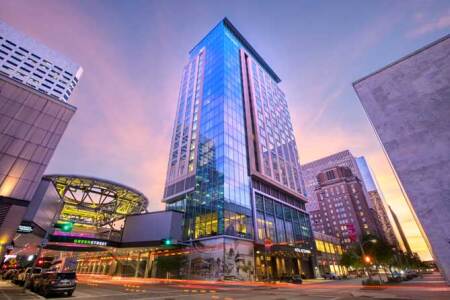
In downtown Houston, Midway and Lionstone Investments are repositioning GreenStreet, a three-city-block mixed-use complex for innovative office tenants. Second-floor retail spaces are being reborn as creative coworking offices, and the new upscale boutique hotel, Hotel Alessandra, is attracting an international clientele. (Midway)
“Houston’s seaport and international air and ground connections attract businesses that need global access,” Brinsden says. “The Texas Medical Center is the world’s largest, and its leaders are focused on translating breakthroughs in patient care, science, and research into business startups. One of the real bright spots is the collaboration between the city, venture capital, and business leaders to nurture an entrepreneurial ecosystem that is vital for innovative, high-tech businesses. People with resources and vision are pulling together to make Houston a more fertile place for high-tech startup companies, and they are concentrating investment along an emerging Innovation Corridor. That has not only energized the startups, but it’s also invigorating for Houston’s large community of Fortune 500 companies that see this pipeline of innovation as vital to their ongoing success.”
One of the largest redevelopment opportunities inside Houston’s urban core is Midway’s 150-acre (61 ha) East River mixed-use project. East River’s mile (1.6 km) of frontage on Buffalo Bayou, the city’s major waterway, will incorporate waterfront trails and recreational access to the water. “Houston is experiencing a parks renaissance, with the most expansive parks and land-conservation projects in its history underway now,” Brinsden says. “Hundreds of millions of dollars are being invested in public green spaces. Those investments are attracting development that improves quality of life. East River will have strong connections to park spaces and trails created by the Buffalo Bayou Partnership.”
At the same time, Houston’s traditional powerhouse sectors, energy and industrial, remain strong and will continue to be, says Abbey Roberson, vice president of planning at the Texas Medical Center. “There is also an interest in innovation and technology, which would support the diversification of the market and introduce a variety of unique development opportunities in and around Houston,” she says.
Houston has a number of exciting developments in a range of project types and market sectors, Roberson adds, including the midtown Innovation District. The district will be anchored by the Rice University–owned Sears Building and TMC3, a new multi-institutional translational research campus slated to break ground this year at the Texas Medical Center with projected completion in 2022—both supporting a focus on innovation, life sciences, and technology. “There are many more impactful projects in the urban core and across our region,” she continues. “For example, looking at our 2019 Development of Distinction finalists, we can see developments where history, architecture, sustainability, and appreciation for unique experiences all stake their claims individually, but also how they blend so well into the larger Houston landscape. The fact that we have a range of major projects under way or recently completed is positive for the broader Houston region.”
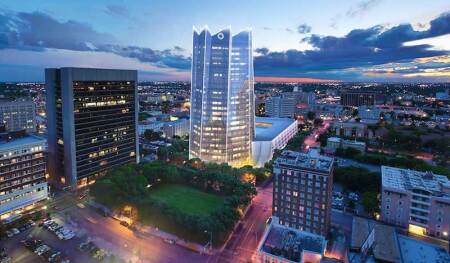
The new $142 million, 23-story Frost Bank tower in San Antonio—on which ground was broken in 2017—is expected to be completed in the second quarter of 2019. The bank will occupy the lower 15 floors of the 460,000-square-foot (42,700 sq m) tower. The rectangular building on the left is Frost’s current headquarters. (Weston Urban)
One major issue facing Houston is matching perception with reality in high-tech employment and innovation, Brinsden says. “Houston doesn’t have the recognition it should as a sophisticated and strategic hub of aerospace, energy, and medicine with a globally connected workforce and educational institutions,” he says. “We are raising the profile of Houston innovators and investors who have always been here, and developing the right incentives and environment to attract more.”
Recent changes for water detention and floodplain regulations in the city as well as in Harris County could challenge the real estate community to think differently about its projects. “Where and how they develop industrial, for example, may change given the new requirements,” Roberson says. “Urban development on constrained sites may become costlier as detention areas will likely need to be accommodated below grade. In general, these are not insurmountable design issues, but it will impact how real estate deals pencil out from a financial standpoint.”
San Antonio has more active cranes dotting the skyline than practically anyone can remember, says Madison Smith, a principal with Overland Partners Architects and chair of ULI San Antonio. “It’s exciting and a tangible sign that the economy and real estate sector are vibrant,” he adds.
The city’s office market is active, with more than 1.7 million square feet (158,000 sq m) coming on line in the central business district (CBD) alone. “That’s a big number for San Antonio,” Smith says, “and it marks a return to downtown after three decades of flight to the suburbs.”
One of the major office developments in downtown is the new $142 million, 23-story Frost Bank tower, which broke ground in 2017 and is expected to be completed in the second quarter of 2019. Frost Bank will occupy the lower 15 floors of the tower while other office users will occupy the other floors of the 460,000-square-foot (43,000 sq m) tower designed by Pelli Clarke Pelli Architects. Significant office development activity is also taking place in San Antonio’s northwest corridor near the Interstate 10/Loop 1604 area.
“Another bright spot for San Antonio’s future is the University of Texas at San Antonio’s [UTSA] vision to grow from more than 30,000 students today to 45,000 within the next 10 years, with 15,000 of these at the downtown campus. Leading this downtown expansion is the National Security Collaboration Center and School for Data Science, which secured its $90 million construction funding this fall. This new school and UTSA’s growth to follow should have a huge impact on San Antonio’s growing tech sector and its urban core,” Smith says. “Also, local insurance giant USAA continues moving more of its talent downtown and into more than 800,000 square feet [74,000 sq m] of office space USAA has acquired in the CBD.”
As elsewhere, rising costs of construction and difficulty sourcing skilled construction labor are real challenges, Smith says.
New Mexico
Historically, New Mexico has been a very attractive destination for retirees, but Albuquerque’s economy is becoming more active and diversified. “The state’s economy is expected to grow moderately in 2019 and beyond as the state invests in education, communications, and core infrastructure projects,” says CoStar’s Cohen.
New Mexico’s energy sector has benefited greatly due to production growth in oil and natural gas, and the state could see a tax revenue surplus of close to $2 billion in 2018, reports John Ransom, senior vice president and principal in the Albuquerque office of Colliers International. “The lack of natural disasters, low cost of living, and temperate climate are a few reasons people are migrating to the Southwest, including New Mexico,” he says. “However, increasing construction costs, tight skilled-labor market, and the rapid population growth are putting pressure on affordable housing, transportation infrastructure, and job markets.”
Major developments in the area include Netflix, which opened a U.S. production hub in Albuquerque, and Facebook, which is one year into constructing its 1.8 million-square-foot (167,000 sq m), six-building data center in nearby Los Lunas. “This $1 billion investment by Facebook will be powered by 100 percent renewable energy and provide hundreds of jobs for years,” Ransom adds.
Colorado
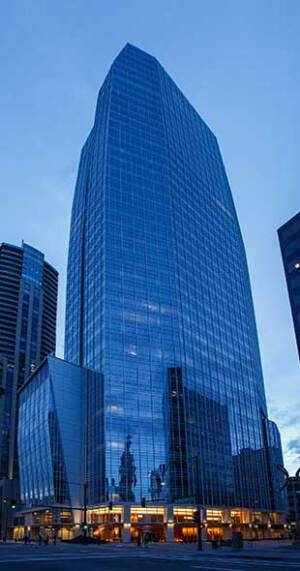
Developed by Houston-based Hines, 1144 Fifteenth Street—a 671,000-square-foot (62,300 sq m) office tower in Denver—was completed in 2018. The 40-story structure features 25,000-square-foot (2,300 sq m) floor plates, 10-foot (3 m) floor-to-ceiling windows, and three outdoor terraces. The building also has destination dispatch elevators and a great room–style collaboration center. (Hines)
Colorado’s main story is in-migration, with an influx of 20- to 34-year-olds to Denver, attracted by a high quality of life and possibly the legalization of marijuana, Cohen says. “Denver’s labor conditions are very strong, and its metro area has reasonably good diversification with energy, tech, and financial services,” he adds.
Denver is on pace to create 40,000 jobs this year, about 25 percent of which are office jobs, according to Mira Finé, Denver-based partner at Moss Adams. “The quality of life within the region continues to attract millennials, and the growth rate is projected to be well above average,” she notes. “The market strengths of Denver include the growth of DIA airport [Denver International Airport], with the land to develop around it; the growing tourism and convention market, which has enhanced the hospitality industry; and the availability of key infill sites. Denver shares the same traits as many other cities in the Rocky Mountain region.”
Colorado is attracting more out-of-state capital as investors chase yield and are excited by Denver’s growing population, says Mike Zoellner, founder of ZF Capital, a Denver-based investment company that develops and acquires multifamily and mixed-use properties. “Tourism and tech startups are strong sectors of the economy,” he says. “The startup culture is expanding rapidly. WeWork, which provides shared workspaces for technology startups, entrepreneurs, and others, is now the largest tenant downtown, and Denver has a very supportive and encouraging infrastructure for these companies.”
A fifth-generation Coloradoan, Zoellner says a number of new developments are planned, under construction, or completed in the city; Canadian developer Amacon is building more than 460 luxury condominium units in two towers downtown. “We have a lot of people who are renting by choice, and they’re starting in our downtown,” he says. “They want to stay a part of it, but eventually people will either start having kids, get married, or want to own, and so putting another condo development in the heart of downtown gives them that opportunity. Over the past 10 years, we have not built enough for-sale housing.”
The strong job growth has overtaken the market’s housing supply, making Denver much less affordable and putting it at a potential disadvantage with other cities in the Rocky Mountain region, says Finé. “But prices are moderating, and the rental market is tailing off a bit,” she says. “Other counties in Colorado have not had the substantial housing cost increases that have been seen in the Denver market, and the prices are declining more rapidly.”
Arizona
Arizona in general and Phoenix in particular are healthy real estate markets, experiencing population growth that exceeds 1 percent a year, says Charley Freericks, principal of Freestone Holdings, an Arizona-based real estate advisory firm. “Typically when that happens, job growth comes along,” he says. “In the second quarter of 2018, nearly 70,000 jobs were added in health care, hospitality, construction, and high tech. Health care is strong, and the hospitality sector is hiring like crazy. Tourism is up, too. We’ve had big growth in financial services and fintech [financial technology] positions, bringing good-paying jobs. Fintech positions are providing good wages, too.”
Phoenix is also seeing strong activity from companies and residents seeking a lower cost of living, says CoStar’s Cohen. “Phoenix had a housing market bust a few years ago, and it is recovering quite well,” he notes. “Historically it had a lot of back-office operations, and that is increasing. Like many metros, its prominent universities are making a significant contribution to the Phoenix economy.”
Ground was broken in the fourth quarter of 2018 for the Novus Innovation Corridor, which will transform 350 acres (142 ha) of university-owned property adjacent to Tempe Town Lake and Arizona State University into a world-class urban community. The development will feature state-of-the-art NCAA athletic facilities and some 10 million square feet (930,000 sq m) of office, multifamily, hotel, and retail space. “The area is already home to State Farm’s regional headquarters, with 2.1 million square feet [195,000 sq m] of office space and more than 7,000 employees,” Freericks says. “Another 260-unit multifamily community is being developed, as is a 160,000-square-foot office [15,000 sq m] building in the area.”
Freericks notes that labor availability, especially among the skilled trades, is not keeping up with Arizona’s growing population. “That’s having a dampening effect on people’s ability to get things done,” he notes. “We’re also experiencing construction cost increases on steel, concrete, drywall, framing, and so forth. The increases are higher than anticipated because of tariffs and other economic policies.”
Idaho
Job growth in Boise has consistently outperformed the national benchmark this cycle, says Kevin Cody of CoStar. “Boise attracts people with its affordable cost of living and [it attracts] companies with a low cost of doing business,” he says. “Employment levels have surged above the pre-recession peak in a range of sectors. In particular, educational and health services; financial activities; manufacturing; and natural resources, mining, and construction are posting healthy annual growth. The metro area is at full employment, with unemployment consistently trending under 3 percent. However, wage gains of 1 percent—year-over-year household income growth—are slower than the national rate of 3.9 percent.”
Boise’s growth of 3.08 percent per year seems rapid because the city has a small population base, explains Clay Carley, general manager at Old Boise, a group of renovated historic buildings at the east end of downtown. “I don’t see it slowing up anytime soon,” he says. “We’re seeing a lot of flight from the Pacific Coast thanks to our low cost of living and high quality of life. Many people come here without work and then find a job and work remotely. According to Outside magazine, Boise is one of the 16 best places to live in the U.S.”
Boise’s economy, particularly the health care segment, is growing. “There’s also been a recent influx of industrial and agriculture growth,” Carley says. “Yogurt maker Chobani built a new $750 million, 1 million-square-foot [93,000 sq m] plant in Twin Falls—the world’s largest yogurt plant—that employs 2,000.”
Wood products manufacturer Boise Cascade, memory hardware company Micron, and privately held “potato king” J.R. Simplot Company also are driving the area’s economy, as is growth at Boise State University and the College of Western Idaho in Nampa. “CenterCal Properties is expanding its Village at Meridian retail center in Meridien,” Clay notes, “and two significant projects are talked about for downtown: a new downtown library with hopes of opening in 2021, and Atlanta-based Greenstone Properties’ proposal to redevelop a sports stadium in downtown Boise’s southwestern corner.”
Like many other areas, Boise faces higher construction costs and a shortage of skilled labor.
Montana
Billings, the largest city in Montana, serves as the state’s major economic hub. Montana does not have a sales tax, making Billings a major destination for shoppers from places like North Dakota, South Dakota, and Wyoming, all of which are within a few hours’ drive.
“Montana’s median household income as of 2017 was $54,790, compared with the 2017 U.S. median household income of $61,464, with substantial growth in recent years,” says Cody. “A lot of this is due to a tight labor market: the unemployment rate is below the national average. The largest sector is trade, transportation, and utilities thanks in part to the metro [area] having the largest coal reserves in the country.”
Wyoming
Wyoming has been dependent on natural growth and has recently been affected by outbound migration. “In recent years, Casper has had weak to negative population growth, net migration, and employment growth,” Cody notes.
While the West, overall, is enjoying an economic surge, any number of factors could disrupt the region’s outlook, from the lack of affordable housing to a dearth of well-educated employees to a slowdown in the tech sector. Only time will tell if communities in the West can ride out any economic turbulence in the year ahead. UL
Mike Sheridan is a freelance writer in Richmond, Virginia.

